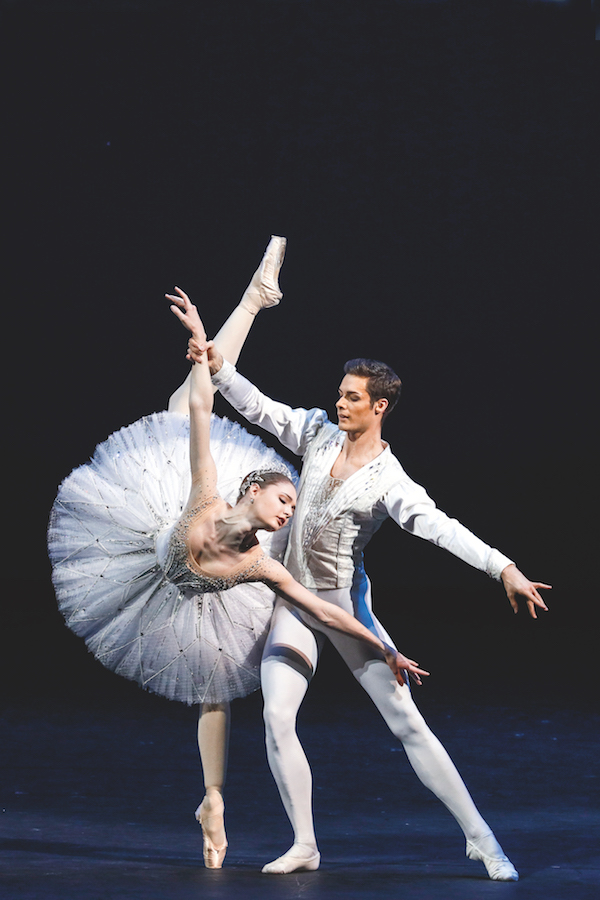George Balanchine left the Soviet Union in 1924, not to return until nearly 40 years later. By then he was the most influential choreographer in the Western world. He had been lured from a peripatetic career in Europe by arts patron Lincoln Kirstein in 1934 to co-found the School of American Ballet, from which one of the great dance companies of the world, New York City Ballet, would emerge. It became a permanent base for Balanchine’s new, contemporary form of classical dance, one derived from his Imperial Russian ballet heritage but quite transformed.
 Alyona Kovalyova and Jacopo Tissi perform in “Diamonds” in Jewels for the Bolshoi. Photo © Damir Yusupov
Alyona Kovalyova and Jacopo Tissi perform in “Diamonds” in Jewels for the Bolshoi. Photo © Damir Yusupov
When Balanchine and NYCB toured the Soviet Union in 1962 they brought with them “an artistic vision of ballet that completely clashed with the official Soviet definition of ballet’s essence”, writes Christina Ezrahi in Swans of the Kremlin: Ballet and Power in Soviet Russia. In its ideology (or lack thereof) and spare aesthetics, Balanchine’s work was the antithesis of Soviet drambalet – stirring dramas peopled with the common folk and having a point of...












Comments
Log in to join the conversation.